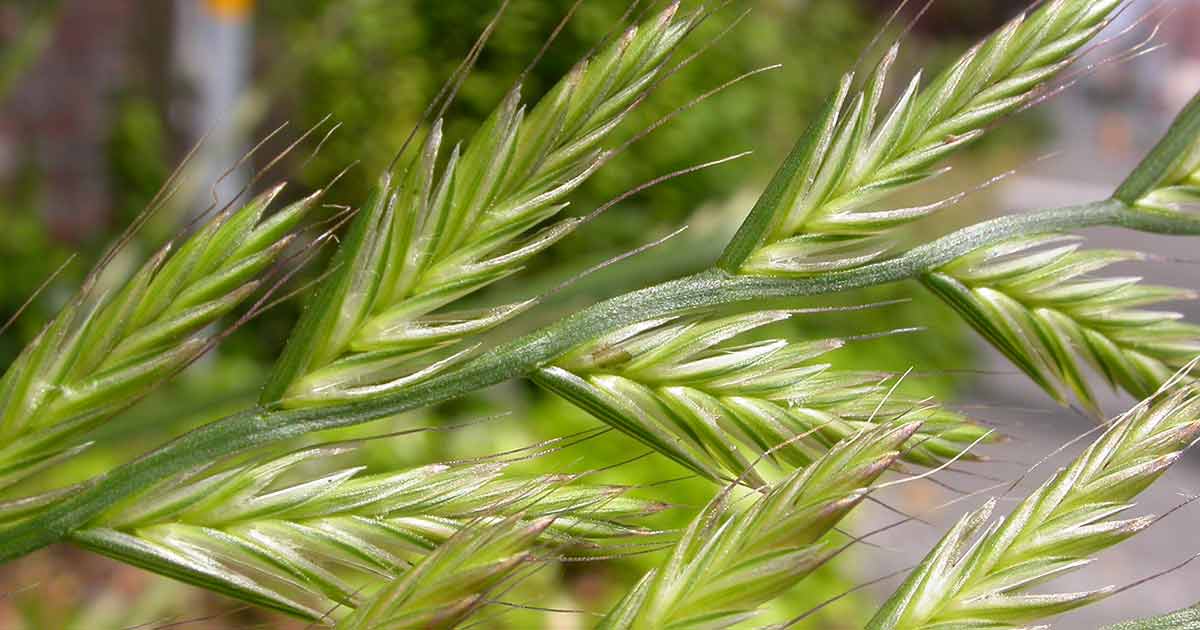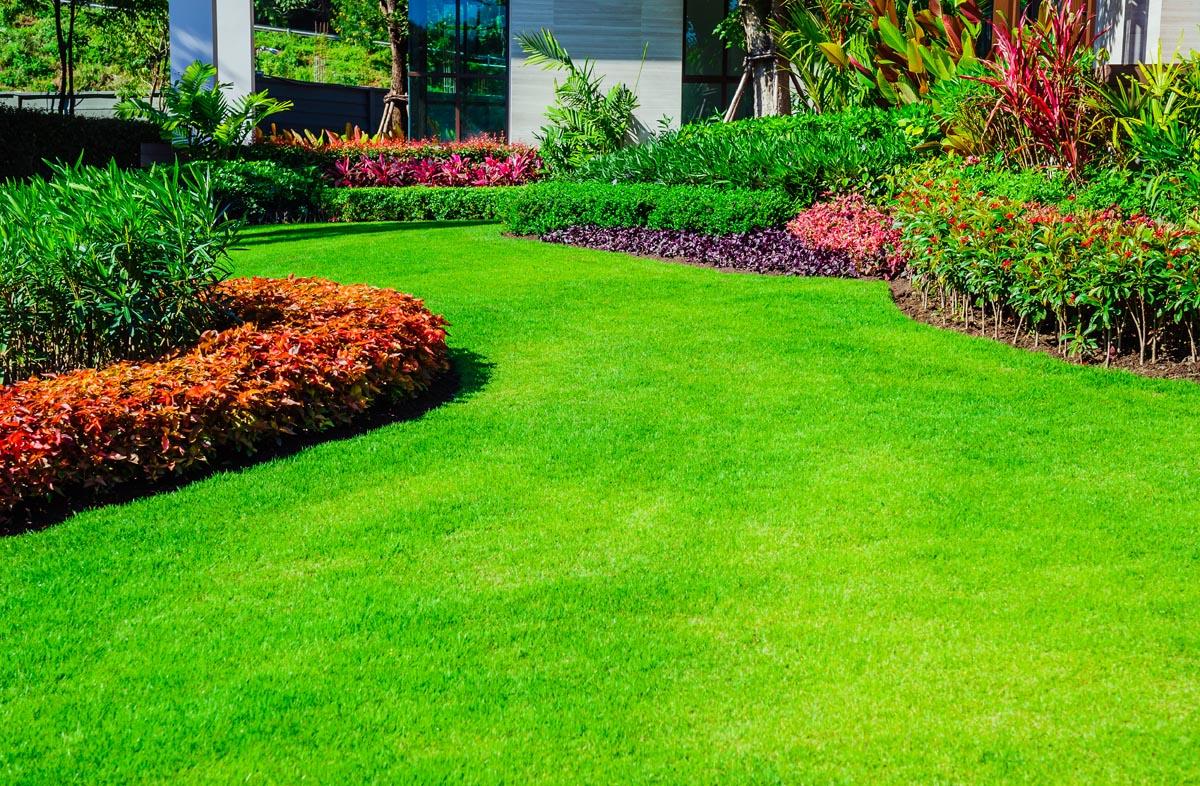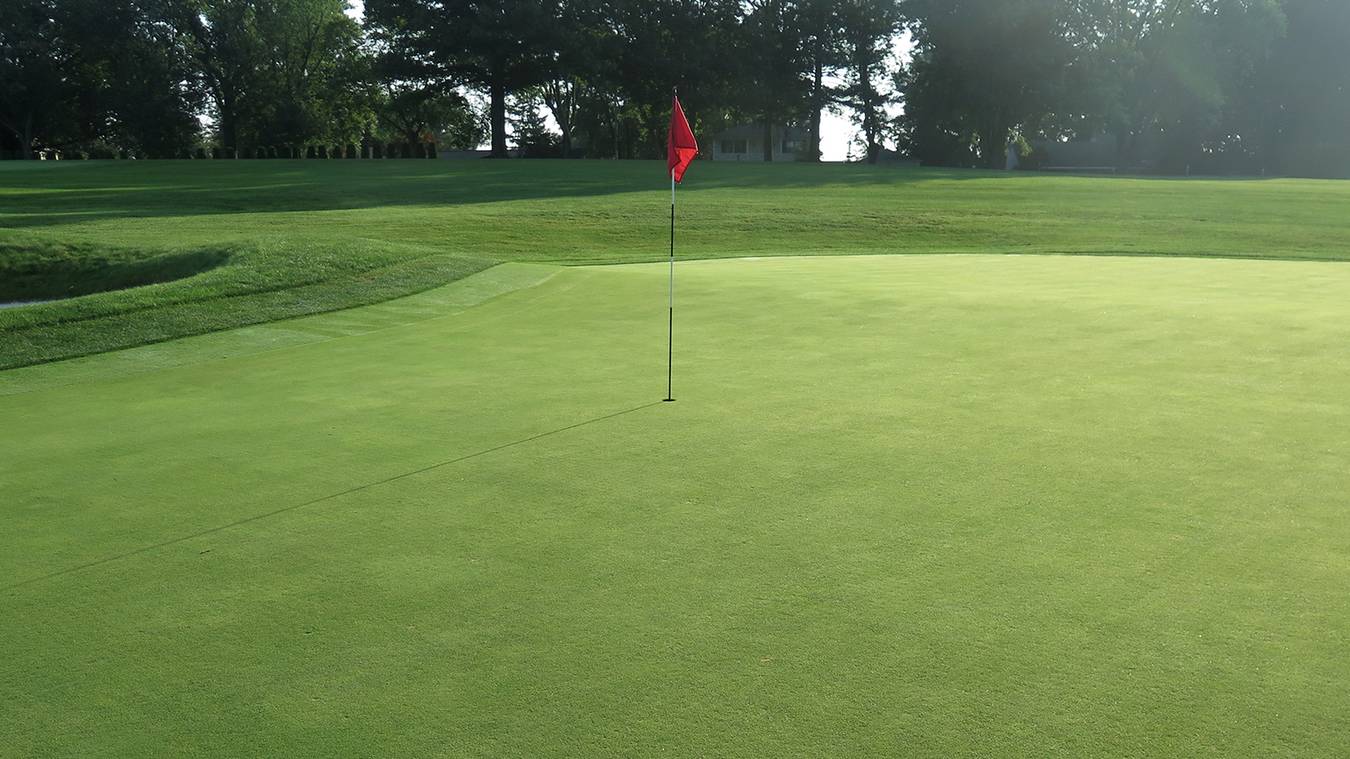Home>Gardening & Outdoor>Landscaping Ideas>What Are All The Types Of Grass


Landscaping Ideas
What Are All The Types Of Grass
Modified: February 18, 2024
Discover the various types of grass for your landscaping ideas. Learn about different grass species and find the perfect fit for your lawn.
(Many of the links in this article redirect to a specific reviewed product. Your purchase of these products through affiliate links helps to generate commission for Storables.com, at no extra cost. Learn more)
Introduction
Grasses are an integral part of landscaping, offering a versatile and natural aesthetic to outdoor spaces. Whether you're envisioning a lush green lawn, a vibrant meadow, or a serene garden, understanding the different types of grasses can help you achieve your desired landscape design. From warm-season and cool-season varieties to ornamental and native options, each type of grass possesses unique characteristics that cater to specific climates, soil conditions, and visual preferences.
As you embark on your landscaping journey, it's essential to familiarize yourself with the diverse array of grasses available. By gaining insight into their growth patterns, maintenance requirements, and visual appeal, you can make informed decisions that align with your landscaping goals. Whether you're aiming for a low-maintenance lawn, a visually striking ornamental display, or a sustainable native landscape, the right type of grass can serve as the foundation for your outdoor oasis.
Understanding the distinctions between warm-season and cool-season grasses is crucial, as it directly impacts their growth and maintenance needs. Additionally, exploring the unique attributes of transition zone grasses, which thrive in regions with fluctuating climates, can provide valuable insights for homeowners and landscapers in these areas. Furthermore, the inclusion of ornamental grasses can add texture, color, and visual interest to any landscape, while native grasses contribute to ecological sustainability and habitat preservation.
By delving into the nuances of each grass type, you can gain a deeper appreciation for the role they play in shaping the visual and environmental aspects of outdoor spaces. Whether you're seeking a resilient grass variety that can withstand high foot traffic or an elegant ornamental grass to elevate the aesthetic appeal of your garden, the world of grasses offers a wealth of options to explore and incorporate into your landscaping endeavors.
As we delve into the intricacies of warm-season, cool-season, transition zone, ornamental, and native grasses, you'll discover the unique characteristics and benefits that each type brings to the table. With this comprehensive understanding, you'll be well-equipped to make informed decisions and create stunning landscapes that reflect your vision and harmonize with the natural environment.
Key Takeaways:
- Grasses are essential for landscaping, offering diverse options for creating beautiful and sustainable outdoor spaces. Understanding warm-season, cool-season, transition zone, ornamental, and native grasses can help you achieve your desired landscape design.
- Ornamental and native grasses bring unique benefits to landscaping, from adding visual interest and ecological sustainability to creating low-maintenance and resilient outdoor environments. Incorporating these grasses can transform your outdoor space into a captivating and environmentally conscious landscape.
Read more: What Type Of Grass To Plant
Warm-Season Grasses
Warm-season grasses thrive in regions with hot summers and mild winters, making them well-suited for southern climates. These grasses exhibit optimal growth during the warm months, displaying vibrant green hues and robust foliage. Their resilience in the face of heat and drought makes them an ideal choice for homeowners and landscapers seeking low-maintenance and visually appealing lawn options.
One of the most popular warm-season grasses is Bermuda grass (Cynodon dactylon), known for its exceptional durability and rapid growth. Its fine texture and dense growth pattern make it an excellent choice for high-traffic areas, such as sports fields and recreational spaces. Additionally, Bermuda grass exhibits remarkable drought tolerance, making it a practical and sustainable option for regions with limited water resources.
Centipede grass (Eremochloa ophiuroides) is another warm-season variety renowned for its low-maintenance nature and vibrant, lime-green color. Its slow growth rate reduces the need for frequent mowing, making it an attractive option for homeowners seeking a hassle-free lawn. With its ability to thrive in acidic soils and its resistance to common lawn pests, centipede grass offers a practical and visually appealing solution for landscaping projects in the southern United States.
Zoysia grass (Zoysia spp.) stands out for its dense growth and exceptional tolerance to foot traffic, making it an excellent choice for lawns, golf courses, and parks. Its ability to withstand heat and drought, coupled with its resistance to pests and diseases, positions Zoysia grass as a top contender for homeowners seeking a resilient and visually striking lawn option.
St. Augustine grass (Stenotaphrum secundatum) is prized for its lush, dark green blades and rapid spread, creating a dense and luxurious lawn. Its shade tolerance and adaptability to various soil types make it a versatile choice for landscaping projects in warm climates. St. Augustine grass thrives in coastal regions, making it a popular option for properties near the ocean.
These warm-season grasses offer a diverse range of characteristics, from drought tolerance and low maintenance to vibrant color and resilience to foot traffic. By understanding the unique attributes of each warm-season variety, homeowners and landscapers can select the most suitable grass type to achieve their desired aesthetic and functional goals in landscaping projects.
Cool-Season Grasses
Cool-season grasses are well-suited for regions with moderate temperatures and distinct seasonal changes, thriving in cooler climates characterized by mild summers and cold winters. These grasses exhibit optimal growth during the spring and fall, showcasing lush greenery and resilience in the face of frost and low temperatures. Their ability to maintain vibrant foliage during the cooler months makes them an attractive choice for homeowners and landscapers seeking visually appealing and resilient lawn options.
One of the most popular cool-season grasses is Kentucky bluegrass (Poa pratensis), renowned for its fine texture, rich green color, and dense growth pattern. It is a preferred choice for lawns, parks, and athletic fields due to its ability to withstand heavy foot traffic and its exceptional cold tolerance. Kentucky bluegrass creates a lush and uniform lawn, adding a touch of elegance to outdoor spaces while thriving in regions with cool, moist climates.
Fescue grass, including tall fescue (Festuca arundinacea) and fine fescue (Festuca spp.), is valued for its adaptability to a variety of soil types and its shade tolerance, making it an ideal option for lawns with limited sunlight exposure. Tall fescue, known for its deep root system and drought resistance, offers homeowners a low-maintenance and visually appealing grass variety that remains green throughout the year. Fine fescue, with its fine blades and graceful appearance, adds a delicate charm to landscapes while thriving in cooler climates.
Perennial ryegrass (Lolium perenne) is prized for its rapid germination and establishment, making it an excellent choice for overseeding warm-season lawns or creating temporary green coverage in cooler months. Its vibrant green color and fine texture enhance the visual appeal of lawns and landscapes, providing a quick and effective solution for achieving year-round greenery in regions with fluctuating temperatures.
Bentgrass (Agrostis spp.) is renowned for its fine texture and exceptional tolerance to low mowing heights, making it a preferred choice for golf course greens and ornamental lawns. Its ability to create a velvety, carpet-like appearance adds a touch of luxury to outdoor spaces, making it a sought-after option for homeowners and landscapers aiming for a manicured and visually striking landscape.
These cool-season grasses offer a diverse range of characteristics, from cold tolerance and shade adaptability to fine texture and rapid establishment. By understanding the unique attributes of each cool-season variety, homeowners and landscapers can select the most suitable grass type to achieve their desired aesthetic and functional goals in landscaping projects.
There are two main types of grass: warm-season and cool-season. Warm-season grasses thrive in hot weather, while cool-season grasses prefer cooler temperatures. Some common types include Bermuda, Kentucky bluegrass, and fescue.
Transition Zone Grasses
Transition zone grasses occupy a unique position, thriving in regions that experience fluctuating climates, where neither warm-season nor cool-season grasses can consistently flourish. This transitional area, encompassing parts of the United States with diverse weather patterns and temperature variations, presents a challenge for homeowners and landscapers seeking suitable grass varieties. Understanding the characteristics and benefits of transition zone grasses is essential for creating resilient and visually appealing lawns in these dynamic environments.
Tall fescue (Festuca arundinacea) emerges as a prominent choice within the transition zone, offering remarkable adaptability to both warm and cool climates. Its deep root system enables it to withstand periods of heat and drought, while also exhibiting resilience in the face of cold temperatures. This versatility makes tall fescue an ideal option for homeowners seeking a low-maintenance and visually appealing lawn that can thrive in the ever-changing conditions of the transition zone.
Fine fescue (Festuca spp.) also shines in the transition zone, showcasing its exceptional shade tolerance and adaptability to various soil types. Its graceful appearance and ability to maintain greenery in cooler climates make it a valuable addition to landscaping projects in regions with fluctuating weather patterns. Whether used for lawns, parks, or recreational areas, fine fescue offers homeowners a practical and visually appealing grass variety that harmonizes with the transitional climate.
Perennial ryegrass (Lolium perenne) plays a crucial role in the transition zone, providing homeowners and landscapers with a versatile grass option that can thrive in both warm and cool conditions. Its rapid germination and establishment make it an effective choice for overseeding warm-season lawns or creating temporary green coverage during cooler months. This adaptability positions perennial ryegrass as a valuable tool for maintaining year-round greenery in regions characterized by fluctuating temperatures.
By embracing transition zone grasses, homeowners and landscapers can navigate the challenges of dynamic climates and create resilient, visually appealing landscapes that withstand the ever-changing environmental conditions. The unique attributes of tall fescue, fine fescue, and perennial ryegrass offer practical solutions for achieving lush and vibrant lawns in the transitional areas, contributing to the beauty and sustainability of outdoor spaces in these diverse regions.
Ornamental Grasses
Ornamental grasses play a pivotal role in landscaping, offering a myriad of visual and functional benefits that elevate the aesthetic appeal of outdoor spaces. These grasses are prized for their striking foliage, graceful movement in the wind, and diverse textures, adding depth and visual interest to gardens, borders, and ornamental plantings. With their ability to thrive in various climates and soil conditions, ornamental grasses have become a staple in landscape design, contributing to the creation of captivating and dynamic outdoor environments.
One of the standout features of ornamental grasses is their remarkable versatility, offering an extensive selection of sizes, shapes, and colors to suit diverse landscaping preferences. From the delicate, arching blades of Maiden Grass (Miscanthus sinensis) to the vibrant, cascading foliage of Fountain Grass (Pennisetum setaceum), these grasses present an array of options for homeowners and landscapers to incorporate into their design visions. Whether used as focal points, borders, or groundcover, ornamental grasses infuse landscapes with a sense of movement and rhythm, creating a harmonious balance with other plantings and hardscape elements.
Beyond their visual appeal, ornamental grasses contribute to the ecological sustainability of landscapes, attracting beneficial wildlife such as birds and butterflies while requiring minimal maintenance. Their resilience to drought and ability to thrive in various soil types make them a practical and sustainable choice for eco-conscious landscaping projects. Additionally, ornamental grasses offer seasonal interest, with many varieties showcasing vibrant fall colors and retaining structural integrity throughout the winter months, adding year-round beauty to outdoor spaces.
The low-maintenance nature of ornamental grasses further enhances their appeal, making them an ideal choice for homeowners seeking visually striking yet practical landscaping solutions. With minimal pruning and watering requirements, these grasses offer an effortless way to introduce texture, movement, and visual drama to gardens and landscapes. Whether used in contemporary, naturalistic, or formal garden designs, ornamental grasses bring a sense of elegance and tranquility to outdoor settings, creating captivating focal points and enhancing the overall ambiance of the space.
Incorporating ornamental grasses into landscaping projects allows homeowners and landscapers to explore a diverse range of design possibilities, from creating serene, Zen-inspired gardens to adding dynamic contrast and visual intrigue to traditional landscapes. With their ability to thrive in containers, borders, and mass plantings, ornamental grasses offer endless opportunities for creative expression and personalized outdoor sanctuaries. By embracing the beauty and versatility of ornamental grasses, individuals can transform their outdoor spaces into captivating, sustainable, and visually enchanting landscapes.
Read more: What Type Of Organism Is Grass
Native Grasses
Native grasses play a pivotal role in sustainable landscaping, offering a myriad of benefits that extend beyond visual appeal. These grasses are inherently adapted to the local climate, soil conditions, and ecosystem, making them resilient, low-maintenance, and ecologically valuable components of outdoor spaces. By incorporating native grasses into landscaping projects, homeowners and landscapers can contribute to the preservation of local biodiversity, soil stability, and water conservation, while creating visually captivating and environmentally conscious landscapes.
One of the defining characteristics of native grasses is their ability to thrive without the need for excessive water, fertilizers, or pesticides. Their natural adaptation to the local environment enables them to withstand drought, resist pests and diseases, and maintain vigor with minimal intervention. This inherent resilience not only reduces the environmental impact of landscaping practices but also promotes the establishment of self-sustaining ecosystems that support native wildlife and beneficial insects.
Native grasses also play a crucial role in soil conservation and erosion control, thanks to their deep root systems and ability to stabilize slopes and embankments. Their extensive root networks enhance soil structure, reduce runoff, and prevent soil erosion, contributing to the overall health and sustainability of the landscape. Additionally, native grasses facilitate the infiltration of rainwater, promoting groundwater recharge and reducing the risk of flooding in urban and suburban areas.
Incorporating native grasses into landscaping projects allows for the creation of diverse and dynamic outdoor environments that reflect the natural beauty and ecological richness of the region. From the graceful, swaying blades of Switchgrass (Panicum virgatum) to the delicate, feathery plumes of Muhly Grass (Muhlenbergia capillaris), native grasses offer a wide array of textures, colors, and growth habits that add depth and visual interest to gardens, meadows, and naturalized landscapes.
Furthermore, native grasses contribute to the preservation of local wildlife habitats, providing food and shelter for birds, pollinators, and small mammals. Their role in supporting native ecosystems and fostering biodiversity underscores their significance in sustainable landscaping practices, aligning with the principles of environmental stewardship and conservation.
By embracing the beauty and ecological value of native grasses, homeowners and landscapers can create resilient, visually captivating, and environmentally conscious landscapes that harmonize with the natural surroundings. The incorporation of native grasses not only enhances the aesthetic appeal of outdoor spaces but also fosters a deeper connection to the local environment, promoting a sustainable and ecologically sensitive approach to landscaping.
Frequently Asked Questions about What Are All The Types Of Grass
Was this page helpful?
At Storables.com, we guarantee accurate and reliable information. Our content, validated by Expert Board Contributors, is crafted following stringent Editorial Policies. We're committed to providing you with well-researched, expert-backed insights for all your informational needs.















0 thoughts on “What Are All The Types Of Grass”